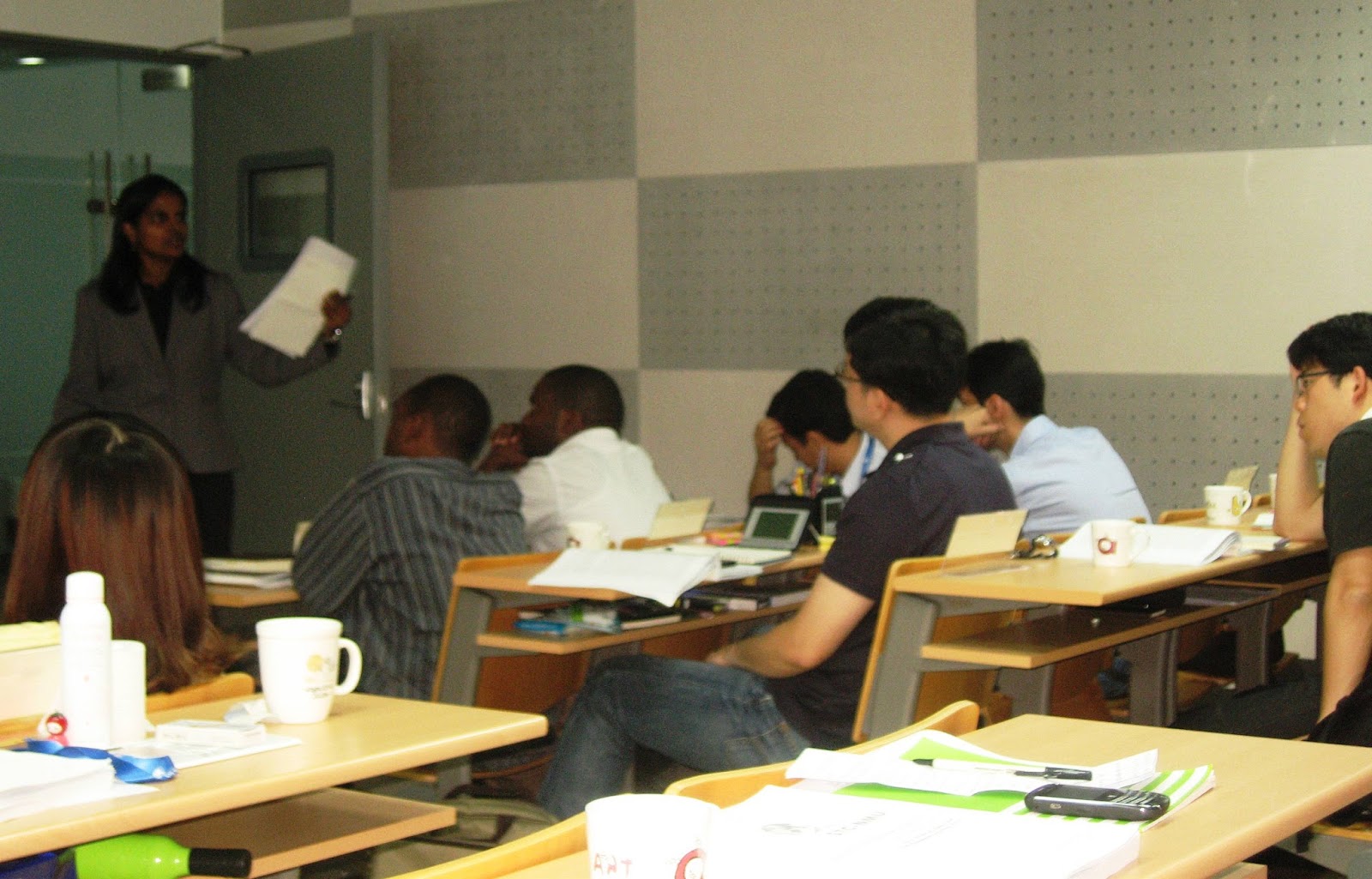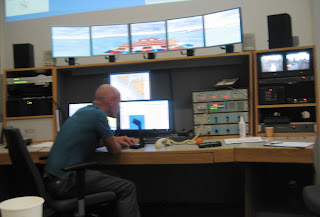An Essay written in October 2012 that fetched me the Gold Prize from Korea's Ministry of Foreign Affairs and Trade.
http://radhikarani.blogspot.in/2012/12/prize-for-my-essay.html
Coexistence of modernity with tradition, opened-up markets with closed sectors, conservative ideals with liberal ones, irreligion with religious fervour, bibimbap with burger, mountains and valleys, bright summers and dark winters, vital earth and vibrant sky, and many more contrasts of sorts are all complimentary to the balance of things and add to the cohesive fabric of Korea, offering interesting insights to foreigners!
Upheavals followed by glorious times in human history symbolise the sapiens' incredible spirit of grit in the face of gripe and their innate nature to rise like a phoenix. The sprouting of inspiring civilizations from the cyclical process of war and peace through the ages is a testimony to this fortitude of men and women, and in the larger context, of communities and countries. As nations free themselves from strife and as they strive, despite disadvantages and inadequacies, to weave a dynamic social, economic, political and cultural web, all pointing towards progress, they stand out as an awe-inspiring harmonized whole for the world. While they race against time to rise above themselves and raise generations of strong-willed citizens, their metamorphosis tells a tale of the triumph of the human spirit -- of great expectations and accomplishments. The saga of Korea, that has since come a long way from the 'Hermit Kingdom' to the 'Democratic People's Republic' is indeed an uplifting story of contrasts and offers a lesson or two for people far and wide.
The Asian Tiger
The Korea of today, making waves as a high-income developed country, one among the G-20 economies and an Asian Tiger alongside Singapore, Hong Kong and Taiwan, draws attention to 'the Miracle on the Han River' - the growth story as termed by its people. Let us not forget that the 'Tiny East Asian Giant' was roiled in war not long ago, six decades ago to be precise, remaining as one of the poorest countries in the world through the 1950s and 60s. But working its way up through a clear vision and emerging as a market economy, ranking today as the 15th in the world by nominal GDP, 12th by purchasing power parity, 7th by global exports and 10th by imports, speaks of the leadership-driven economic development. This growth, marked by low state debt, high fiscal reserves and strong loan portfolios of banks, is in turn lending resilience to the economy, through thick and thin.
With hardly any natural resources to boast of except for mountains on the mainland and seas around the coast, it is indeed remarkable that labour-intensive manufacturing and industrial development, supported by government initiatives and foreign investment flows, have taken the growth chart of the peninsula to new heights, as also the income levels of its people. As per 2010 figures, the GDP per capita is $30,000. Contrast this to a mere $2300 in 1980.
Notwithstanding the Asian Financial Crisis of 1997, the country's GDP growth within the three decades went up from $88 billion to $1,460 billion changing its status from being recipient of official development assistance to being donor, to nations in need. Making good with what it has, the country has been able to reap benefits -- reaching a GDP of 2.6 per cent in agriculture, 39.2 per cent in industry, comprising electronics, telecom, automobile production, chemicals, shipbuilding, steel and 58.2 per cent in the services sector, comprising financial, health services and social infrastructure.
Given the closed services sector, a lull in the demand for exports in the wake of the continuing global recession and jobless rate of 3.4 per cent for a 73-million plus population, will the nation sustain its growth for long, is a question bothering none other than the Finance Minister Bahk Jae Wan. Fear of competition from foreign rivals in the services sector is a matter of concern for the government now.
The minister could be right. There is a need for innovation in the bipolar economy, to keep the symbolic 'Korean Wave' swinging on the global turf. Pleading his countrymen to dream big and work towards building their country's international brand image, the minister has recently cited Psy, the singer of the global smash hit Gangnam Style, as an example of the kind of "creativity and international competitiveness" the country needs. Yes, time for reinventing K-Band and K-Brand!
B(r)and Korea
Hyundai and Samsung sound like Tata and Birla of India or Audi and Opel of Germany. Life in Korea sings and swings to the two brands, that make for interesting case studies and discussions on brand building in B-schools. For a beginner in Korea, all things Samsung on a first glance -- from mobile phones to vacuum cleaners -- seems a pleasant surprise. But such is the power of this Chaebol or conglomerate whose net income runs to US$ 18.3 billion. Three Stars, three cheers!
Well, the growth stories of other brands too, like LG, Daewoo, STX, sum up the focus and the drive of the people heading these giants. The industriousness of the 25 million working force of Korea, known to work the longest hours per year and so ranked as the world's hardest working country in 2008 by the Organization for Economic Co-operation and Development, substantiates the speed of success that the Korean enterprises achieve in little time, when compared to global counterparts.
Think Korea, think K-Pop. This adage sounds and seems true on switching on to the television. That the musical genre consisting of dance, electronic, electro-pop, hip hop, rock, and R&B music is a popular mode of expression and entertainment for the youth and unique to the country, is anybody's guess. The viral media and Youtube views around the world have been creating teen idols out of nimble dancers and singers.
A contrast of sorts though is the 34-year-old portly rapper Psy, who, despite hurdles, has jumped his way over through his own brand of talent, that worked wonders all the way to fame. As recently as September, Gangnam Style was recognized by the Guinness World Records as the most "liked" video in YouTube history with 480 million views. The tune and the dance moves have become a hit in many countries. Way to go for Psy and perhaps, a way for other pop aspirants to explore!
Food Funda
Homes, gardens, clothing, cuisine, festivals, games, beliefs, mythological shows on TV add to the curiosity of foreigners. However, food is what tickles the palate, the most. If coffee shops dotting busy streets are an instant eye-catcher for new-comers and could hook them on to the chocolate drink, the literally evergreen gimbap and kimchi and other traditional gastronomic delights served in eateries satisfy the taste buds of all and sundry, any day! That the life expectancy of the people is around 79 years and the degree of obesity is only 10 per cent speaks for the healthy food habits of the people.
A quick study of the menu in a decent restaurant shows the basis of the Korean diet as being low-fat comprising of tofu, noodles, fish and vegetables. Kimchi -- seasoned with lots of hot spices pickled vegetables -- and taken as a side dish at breakfast, lunch and dinner, leaves an effective imprint and is a name hard to forget for any foreigner!
According to an international survey, grilled beef has turned out to be the only unhealthy meal of Korean cuisine. Loved largely by the natives, it is however consumed mainly on important holidays. The survey goes on to point out that an average Korean, by all counts, eats just 3.5 kilograms of meat a year, as against the ordinary citizen of the United States who consumes 30 kilograms!
Politics & Population
With presidential elections due in December this year (2012) and the heat picking on, it is interesting to see the campaign pledges of the candidates in the media, harping on economy during the crisis. A look at the political system suggests that the government could be more open and connected towards business and increase its assistance to start-up companies, to encourage entrepreneurship and employment generation in the wake of a 2.4 per cent growth rate projected for this financial year by the Bank of Korea. Among the various industrial segments, the shipbuilding industry was hardest hit owing to the European crisis, and seven-month exports so far this fiscal stood at $38.19 billion, down 57 per cent from the same period of 2011.
According to the Federation of Korean Industries, exports by shipbuilding will fall 28 per cent, steelmaking 13.9 per cent and petrochemical industries 5.9 per cent in the second half of this year. Against this backdrop, the protectionist sentiment perceived abroad and the subject of deregulation could be addressed forthwith to restore the country's growth path.
An important issue of concern however is the decreasing population growth. "With the lowest birthrate in the world and a rapidly aging population, the growth engine that is the heart of our economy has stopped," Presidential candidate Rep Park Geun-hye of the conservative Saenuri Party remarked recently. While growing longevity calls for welfare measures, falling birth rate stands out for its urgency. According to an OECD study, the growth rate of South Korea's economy would hover around 2 per cent in 10 years, and 1 per cent in 20 years. This will indeed be aggravated by decelerating birth rate in the decades to come.
Another worrying factor is the uncertainty about the future in the masses, thanks to the fluctuating global financial condition. A recent survey by Hyundai Research Institute on Koreans' perception of class membership brought out these results: People who described themselves as poor accounted for 50.1 per cent, those who classified themselves as middle class 46.4 per cent and the upper class a mere 1.9 per cent. As for the growing skepticism on the economy from the middle class, the reasons cited in the survey were deepening polarization, continuing economic slump, lack of decent jobs, excessive household debt, unfair opportunities and unpreparedness for old age. This view, according to a recent Korean Herald editorial, depicts Korea as an almost closed society. "This is worrisome indeed as a society cannot generate the energy and vitality it needs when almost all its members feel there is little room for upward mobility The middle class is the backbone of society. If it remains depressed or contracts, it will harm social unity and deter economic growth," the editorial adds.
Job creation and thereby social cohesion for the young middle class, reduction of housing costs for people in their prime, lowering of educational expenses and increase of post-retirement benefits are issues that need to be addressed by the policy makers.
People's warmth
Despite the language barrier, given the homogeneity of Korea in terms of speaking its national language, foreigners are treated with a friendly grin and a few Hangul pleasantries by the natives. It really pays to return the warmth with an Annyeonghasey. Also, nothing seems to dampen the undying spirit of the Korean people. So, a smile is an easy and sure way to strike up a conversation, mainly with body language, given the limitations of people on both the sides. However, it is a common sight to see schoolchildren and English-educated youth to wave a Hi and a Bye. Yet, the love for the language is noticeable all around. And so is the respect for all things Korean. So after a long day's work, it is perfectly fine for one to sign off the evening with Soju and Infinite playing in the background.
More importantly, living in Korea, working with its people, getting a glimpse of the life of contrasts and leveling off things with the sheer balance of Yin and Yang, the national symbol of pride as seen on the Korean Flag, could indeed be an exhilarating experience altogether.








.jpg)







.JPG)













